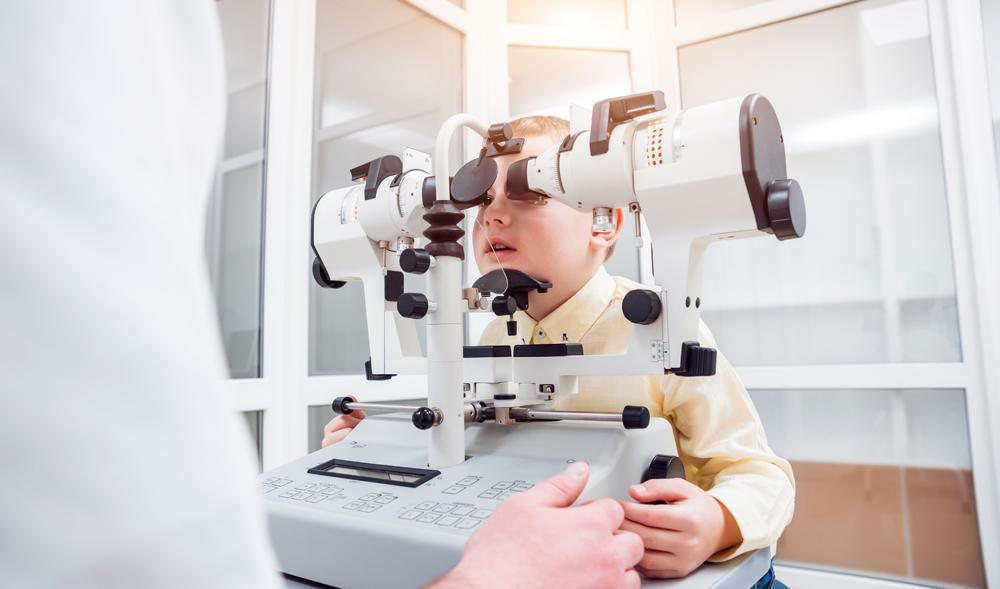Top-Rated Eyecare Near Me: Professional Vision Services Available
Top-Rated Eyecare Near Me: Professional Vision Services Available
Blog Article
The Function of Advanced Diagnostic Devices in Identifying Eye Disorders
In the world of ophthalmology, the usage of innovative diagnostic devices has transformed the very early identification and management of numerous eye disorders. From detecting subtle changes in the optic nerve to checking the progression of retinal conditions, these innovations play a pivotal function in enhancing the accuracy and efficiency of diagnosing ocular conditions. As the need for specific and timely medical diagnoses proceeds to expand, the integration of sophisticated devices like optical comprehensibility tomography and visual area screening has ended up being essential in the world of eye care. The elaborate interaction between innovation and ocular practices not only clarifies intricate pathologies however likewise opens up doors to tailored therapy approaches.
Relevance of Very Early Medical Diagnosis
Very early diagnosis plays a pivotal role in the reliable management and treatment of eye disorders. Timely identification of eye conditions is essential as it enables timely intervention, potentially avoiding further progression of the disease and reducing long-term problems. By discovering eye conditions at an early stage, healthcare companies can use ideal therapy plans tailored to the specific problem, inevitably causing much better results for patients. Early medical diagnosis allows clients to access essential assistance services and sources faster, improving their total high quality of life.

Technology for Identifying Glaucoma
Advanced diagnostic innovations play an important function in the early discovery and surveillance of glaucoma, a leading reason of irreparable loss of sight worldwide. One more sophisticated tool is visual area screening, which maps the sensitivity of a client's visual area, assisting to identify any kind of locations of vision loss attribute of glaucoma. These sophisticated diagnostic tools make it possible for eye doctors to identify glaucoma in its early phases, enabling for timely intervention and much better administration of the disease to prevent vision loss.
Function of Optical Comprehensibility Tomography

OCT's capability to quantify retinal nerve fiber layer density enables exact and unbiased dimensions, aiding in the early detection of glaucoma also before aesthetic field defects come to be evident. Additionally, OCT modern technology permits longitudinal surveillance of architectural adjustments gradually, assisting in tailored therapy plans and prompt interventions to aid preserve people' vision. The non-invasive nature of OCT imaging additionally makes it a preferred option for monitoring glaucoma progression, as it can be duplicated routinely without creating pain to the client. On the whole, OCT plays an important duty in enhancing the diagnostic precision and monitoring of glaucoma, ultimately adding to far better outcomes for people in jeopardy of vision loss.
Enhancing Diagnosis With Visual Field Testing
A necessary part in thorough ocular examinations, visual field testing plays a pivotal role in enhancing the diagnostic process for numerous eye problems. By analyzing the complete level of a patient's aesthetic area, this test gives critical details concerning the useful stability view website of the entire aesthetic path, from the retina to the aesthetic cortex.
Aesthetic field testing is specifically useful in the medical diagnosis and management of problems such as glaucoma, optic nerve conditions, and different neurological diseases that can impact vision. Through measurable measurements of outer and main vision, medical professionals can discover refined adjustments that may show the visibility or development of these disorders, also prior to visible symptoms take place.
In addition, visual area testing permits the tracking of therapy efficacy, aiding ophthalmologists tailor healing treatments to specific patients. eyecare near me. By tracking adjustments in visual area performance over time, health care companies can make informed choices regarding adjusting medicines, recommending medical interventions, or carrying out other proper measures to maintain or improve an individual's visual function
Handling Macular Degeneration

Final Thought
In conclusion, progressed analysis tools play an essential role in recognizing eye conditions early on. Technologies such as Optical Coherence Tomography and aesthetic field testing have significantly boosted the accuracy and performance of identifying conditions like glaucoma and macular deterioration.
Report this page